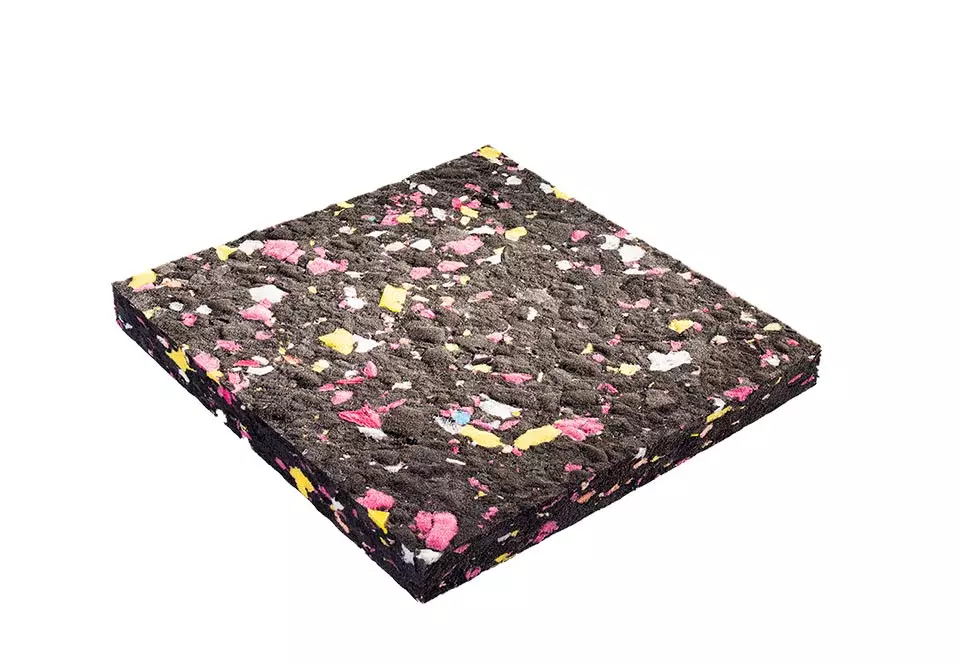EPE Foams
EPE foam, also known as expanded polyethylene foam, is a closed-cell foam material made from low-density polyethylene (LDPE) resins. This foam is characterized by its lightweight, softness, flexibility, excellent thermal insulation, and shock-absorbing properties. The material is chemically inert, waterproof, and resistant to mildew, rot, and bacteria, making it an ideal choice for a wide range of applications. One of the main characteristics of EPE foam is its low-density structure, which makes it lightweight and easy to handle. It is also non-abrasive, making it safe to use for packaging delicate and sensitive items. The foam is available in a range of thicknesses and densities, which can be customized to suit specific applications.
.jpg)
.jpg)
.jpg)

| Product Specification | ||
|---|---|---|
| Product Code | --- | |
| Density Available | 24 Density | |
| Shape | Customized | |
| Application | Packaing | |
| Patern | Plain | |
| Sample Available | 1 No's | |
| Certification | ARAI & ISO | |
| Main Demestic Market | All India | |
| Colour | White | |
| Grades | FR & Non FR | |
| Third Party Confirmation | ARAI & ISO | |
Product Description
EPE foam is commonly used in the packaging industry for a variety of products, including electronics, medical devices, automotive parts, and sports equipment. Its shock-absorbing properties make it an excellent material for protecting fragile items during transit. It is also used in the construction industry for insulation and soundproofing applications.
Another application of EPE foam is in the manufacturing of children's toys and sports equipment, including foam mats, balls, and padding. The material is soft and flexible, making it an excellent choice for these applications.
EPE foam is also used in the marine industry for buoyancy applications, such as boat fenders, and in the agriculture industry for insulation and padding. Additionally, it is used in the automotive industry for sound insulation and vibration damping applications.
EPE Foams Characteristics
EPDM foam is a type of closed-cell foam made from EPDM (ethylene propylene diene monomer) rubber, a synthetic elastomer. The unique properties of EPDM foam make it an ideal choice for a variety of applications.
EPE foam, also known as expanded polyethylene foam, is a versatile closed-cell foam with a range of characteristics suitable for a variety of applications. EPE foam is a lightweight and durable material that provides excellent cushioning and shock absorption, making it ideal for protecting delicate products during transit or storage.
One of the unique characteristics of EPE foam is its excellent thermal insulation properties. The closed-cell structure of the foam prevents heat from escaping, making it an ideal material for use in insulation applications. EPE foam also has a high level of chemical resistance, making it ideal for use in environments where exposure to chemicals is a concern.
Another advantage of EPE foam is its water resistance, which makes it suitable for use in wet environments or in applications where moisture may be present. EPE foam is also resistant to UV radiation, making it suitable for use in outdoor applications.
EPE foam is a versatile material that can be easily shaped and cut to fit specific applications. The foam can be laminated with other materials, such as films or fabrics, to enhance its properties and create a more tailored product. EPE foam is also easy to fabricate, and it can be heat sealed, glued, or stitched, allowing for easy customization to meet specific application requirements.
In addition to its cushioning and insulation properties, EPE foam is also an eco-friendly material. It is 100% recyclable and does not contain any CFCs or other harmful chemicals, making it a safe and sustainable choice for many applications.
Overall, EPE foam's characteristics make it an ideal material for a variety of applications, including packaging, insulation, cushioning, and padding. Its lightweight, durable, and versatile nature makes it a preferred choice in industries ranging from automotive and construction to electronics and medical equipment.
EPE Foams Applications
Expanded Polyethylene (EPE) foam is a versatile and lightweight foam that has many applications in various industries. EPE foam is made by using low-density polyethylene resins and a physical expansion process to create a foam structure. This results in a closed-cell foam with excellent cushioning and shock-absorbing properties, making it ideal for use in packaging, insulation, and other applications.
One of the primary characteristics of EPE foam is its flexibility and ability to mold to a wide range of shapes and sizes. This makes it ideal for packaging applications, where it can be easily cut and shaped to fit around products and provide protection during shipping and handling. Additionally, EPE foam has excellent thermal insulation properties, making it suitable for use in insulation applications, such as in construction or HVAC systems.
EPE foam is also resistant to water, chemicals, and UV radiation, making it suitable for use in harsh environments. It is also non-toxic and environmentally friendly, as it can be recycled and reused in other applications. This makes EPE foam a popular choice in the packaging industry, as it offers a sustainable and cost-effective solution.
In the automotive industry, EPE foam is used for noise reduction and vibration dampening. It is also used in the manufacturing of sports equipment, such as protective gear and padding. Additionally, EPE foam can be laminated with other materials, such as films or fabrics, to create composite materials with enhanced properties.
In the medical industry, EPE foam is used for cushioning and padding in medical devices and equipment. Its ability to conform to various shapes and sizes makes it ideal for use in prosthetics, orthotics, and braces. It is also used in the manufacturing of wheelchair cushions and hospital bed padding.
In the construction industry, EPE foam is used for insulation and cushioning in building materials, such as flooring and roofing. Its lightweight and flexible nature make it easy to install, and its thermal insulation properties make it energy-efficient.
Overall, EPE foam is a versatile and cost-effective solution for a wide range of applications in various industries. Its excellent cushioning, shock-absorbing, and thermal insulation properties, combined with its flexibility and sustainability, make it a popular choice in many industries.
FAQ's
EPE foam, or Expanded Polyethylene foam, is a lightweight, closed-cell foam material that is known for its excellent cushioning and shock-absorbing properties. It is widely used for protective packaging and insulation.
EPE foam is valued for its lightweight nature, moisture resistance, low thermal conductivity, and high shock absorption capabilities. It is also easy to shape, cut, and mold, making it suitable for various applications.
EPE foam is commonly used for protective packaging in shipping and transportation, as well as for cushioning and insulation in the packaging of fragile and sensitive items. It is also found in sports equipment, automotive interiors, and underfloor insulation.
EPE foam's closed-cell structure traps air within the foam, enabling it to absorb and distribute impact energy, thus protecting items from damage during handling, shipping, or impacts.
Yes, EPE foam can be customized in terms of thickness, density, size, and shape to meet specific application needs. Manufacturers can tailor the foam to provide the desired level of cushioning and protection required for a particular product or application.



